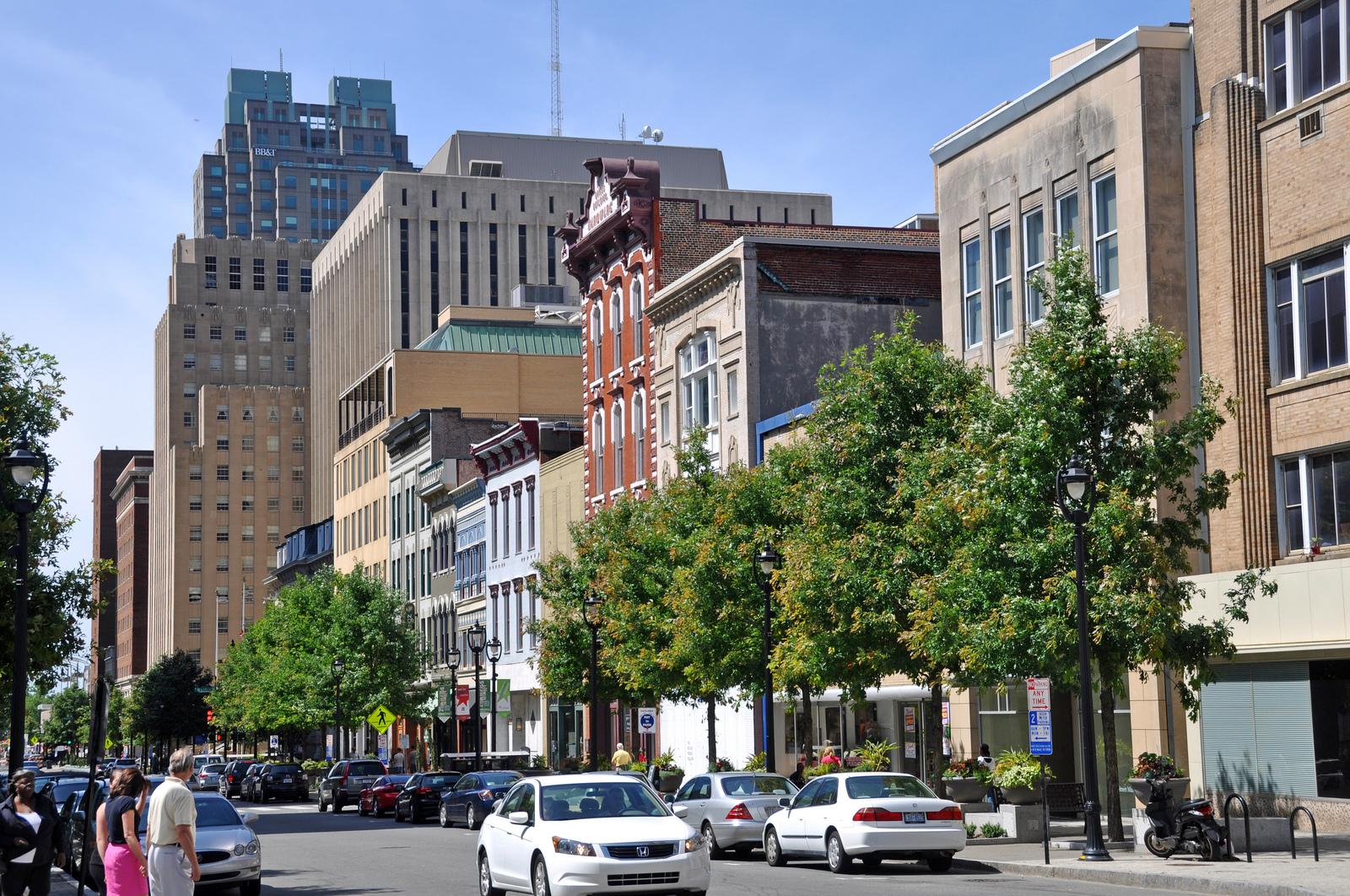A Community of Practice for Equitable Electric Mobility

If the phrase “community of practice” is new to you, it was to me, too. But before I explain it, let me go back to the beginning.
Growing up, I moved around a lot. By the time I was in high school, my family had already relocated to different cities or states on at least 10 different occasions. With all of this moving around, change was constant. Whether it was the kids in my class, the weather outside, or the local politics, there was rarely any aspect of my life around long enough for me to get used to it. One common occurrence, however, was the difficulty my family experienced getting from place to place.
As a single parent with six children and no car, my mom often relied on public transportation, and in most of the places we lived, the bus service was both infrequent and unpredictable. Still, I grew to appreciate the attention to detail that local transit systems put into their bus route maps and pamphlets and the courtesy I’d see fellow passengers showing each other and the bus operators. Through these childhood experiences, I learned to not take my ability to get around for granted. I tapped into the liberation that bicycles and bike-friendly streets can provide; my passion for mobility justice emerged.
Fast forward to July 2020 when the long term implications of COVID-19 were being realized, thousands of jobs lost, and the safety of public transportation uncertain. I was fresh out of graduate school, uncertain about employment opportunities, and running out of savings fast. Then through a Google search for “Environmental Justice Jobs near me,” I happened upon The Greenlining Institute’s website and read the words “Mobility Equity” and “Community of Practice.” The former drew my attention but the latter piqued my interest. I had never heard of a community of practice before, but I immediately wanted to know more.
I quickly discovered a number of articles and pages that explained what communities of practice are and the kinds of outcomes that they can yield. Given my graduate research on meaningful community engagement and my experience developing curriculum as a graduate student instructor, I knew this was a great opportunity, so I applied.
In August I was offered the position and by September I began my role on the Environmental Equity team as a Program Manager for the community of practice project. For this project, The Greenlining Institute is partnering with Forth to develop a national community of practice that will include organizations across five states and will focus on advancing clean and equitable transportation for all. We call the project Towards Equitable Electric Mobility, or TEEM, and will include environmental justice, clean energy, and transportation advocacy organizations.
At this point, you may still be wondering what a community of practice is. A community of practice is a group of people who share a collective overall view of an issue and yet bring their individual perspectives on any given problem to create a social learning system that goes beyond the sum of its parts. The goal of the TEEM Community of Practice is to establish a peer-to-peer network of advocates to share policy goals, learn together, build relationships, and in the process develop a sense of belonging and mutual commitment towards advancing racial equity, electric mobility, and climate change goals. TEEM project staff will provide regular hands-on support directly to member organizations, while also building a community among these teams in which they can learn from and support one another across state lines.
The community of practice format balances the community, networking, and learning components of an educational cohort while also maintaining the policy advocacy focus of a coalition. By intentionally structuring TEEM’s goals and activities with equitable electric mobility as the central focus, TEEM will provide a foundation from which its members can grow their capacity to advance equitable and clean mobility policy.
The TEEM community of practice will officially launch in January, so we’ll dedicate the next month and a half to preparing in three ways: 1) finalizing the cohort of member organizations, 2) conducting a survey to collect members’ priorities, goals and needs, and 3) starting to develop a curriculum that will guide the learning component of TEEM. So far, TEEM project staff have met with over 50 organizations and individuals — introducing the concept, answering questions, and learning about potential members in an effort to recruit organizations to participate.
This outreach has helped us narrow the list of states to focus on for the first year of TEEM, and they include California, Colorado, Illinois, Virginia, and North Carolina. We sought to include a broad range of geographic areas and bring in states that have either already made progress on advancing equitable electric mobility or showed signs of being in a position to do so soon. Here are our initial states and the reasons we focused on them:

California
- Greenlining and the Charge Ahead Coalition have made progress advancing equitable electric mobility pilot programs.
- California has been and continues to be a leader in the advancement of electric mobility options, especially in terms of electric vehicle adoption and policymaking, as evidenced by the Governor’s recently-announced goal of eliminating the sale of new gasoline and diesel passenger vehicle sales by 2035.
- California clean mobility programs, largely subsidized by cap-and-trade, could benefit from learning about other forms of financing so that they don’t have to depend on a single financing mechanism.

Colorado
- Colorado has also seen relatively high EV adoption compared to the rest of the U.S. and announced an electric vehicle plan in April.
- The state has a strong history and ongoing presence of environmental activism, and equity is playing a greater role in many of the organizations’ efforts. For example, Conservation Colorado’s Protégete is an organizing-focused program that advocates for equitable access to a healthy environment, specifically for Colorado’s communities on the frontlines of pollution.

Illinois
- The state has been a leader in promoting clean energy jobs.
- Chicago’s poor air quality (especially in communities of color) has led to calls for the electrification of heavy duty vehicles such as freight trains and buses.
- A number of Chicago and Illinois organizations have already come together to form the Transportation Equity Network.

Virginia
- Virginia is one of twelve states participating in the Transportation and Climate Initiative, a Mid-Atlantic regional collaborative that seeks to improve transportation, develop the clean energy economy, and reduce carbon emissions from the transportation sector. Ensuring that TCI prioritizes equitable outcomes will likely be a major focus of TEEM’s Virginia cohort.
- Virginia has passed a number of important pieces of legislation in recent years, including the Environmental Justice Act
North Carolina:

- As a mostly rural state, North Carolina provides an excellent opportunity to learn about effective strategies for electrifying mobility in ways that meet the needs of a largely rural population. These lessons could prove valuable to the ability of TEEM to include other rural states and communities in this effort.
- In July, North Carolina showed policy leadership by joining the Multi-State Medium-and Heavy-Duty Zero Emission Vehicle Memorandum of Understanding, “which includes trucks, delivery vans, and transit and school buses, and commits states to 100 percent zero emission truck and bus sales by 2050.”
While these states will make up the first annual TEEM cohort, we plan to have multiple cohorts over the next few years as the ultimate goal of TEEM is to develop a national agenda for equitable electric mobility. And we’ll make sure those working outside of the above states will have opportunities to connect with and participate in TEEM.
The flyer below outlines some of the major details of TEEM, including its one-year timeline, core activities, benefits, and desired outcomes.

As the community of practice gets underway in January, one of the things that I am most excited about is the opportunity to hear other people’s stories. What brought them into the world of mobility justice or vehicle electrification? Was transportation never an obstacle for them? Do they still face barriers in their travel to this day? I anticipate a wide range of answers to these questions, and I look forward to building a dynamic community that is made stronger thanks to its members’ unique backgrounds.
If you would like to speak with our project team to learn more about TEEM, please email us at isa.gaillard@greenlining.org and alexad@forthmobility.org. Download Flyer



